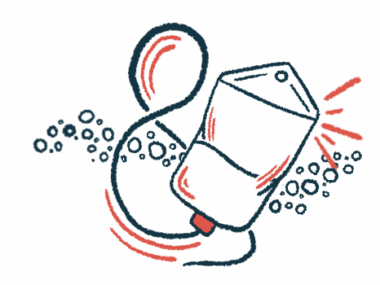Keeping Up Appearances
Written by |

My sister got the worst haircut last week. It’s actually a good cut, just not the one she asked for.
She showed the stylist a selfie taken on a good hair day, and said she only wanted a trim. But when she looked in the mirror for the reveal, she didn’t recognize herself. The worst of it is, it’s too drastically short to fix. The only cure is to wait for it to grow out.
Ironically, this was Mom’s treat, to thank my sister for giving her a ride to the salon and waiting while she got a perm. It was a spontaneous suggestion while her curls were curing that Sis should slip into the chair next to her and get a quick trim.
Now Mom feels as bad as she did decades ago, when she sent my little sister off to kindergarten with DIY bangs, not realizing it was school picture day. In her youthful and enduring wisdom, my sister was never embarrassed about it. Instead, she has teased our mother for years about her lack of barbering skills. This time, she has managed to focus her anger on the stylist while chiding Mom to buy her one of those big pink bow headbands for bald baby girls.
Hair today, gone tomorrow
A bad haircut might seem like a small and superficial thing, but as anyone who has had one can attest, it is not. Hair is a prominent characteristic that people immediately notice about us, remember us by, and use to describe us to others.
In a small but universal way, a bad haircut is analogous to a rare disease diagnosis. Although we don’t control the genes that create the color and texture of our hair or the stylists who shape it, we are judged by it. Without taking a risk or receiving a warning, everything can change in an instant. You see yourself differently, and fear the rest of the world will, too.
No energy or enthusiasm
My husband was always a healthy and energetic fellow, until suddenly, he wasn’t. He had given up the motorcycle, along with the single life, adopted my pescatarian diet, worked hard, laughed harder, and looked years younger than his contemporaries. Then he manifested the symptoms of atypical hemolytic uremic syndrome (aHUS) over a long weekend, and it looked like he was going to die.
During his hospitalization, he turned a waxy yellow with jaundice and got all puffed up with water retention. He was discharged with a Hickman scar on his chest, a PICC line hanging out of his arm, and a handicap parking permit on our car. He had no interest in having visitors or leaving the house, because he didn’t want to be seen in that condition. The cool factor had vanished — he was a patient now, and he looked like it.
From chic to short
My sister has always been adventurous with her hair. It was long in high school, spiked for concerts in college, then permed for job interviews, with various highlights and colors along the way. Lately, her hair was past her shoulders, full and wavy, if a bit shaggy around the edges. Then, in an afternoon, some small-town, Vidal Sassoon wannabe treated her scalp like his sculptural work and amputated two years of growth.
Since the ambush at the salon, my sister has been on the internet, Googling hot oil treatments and vitamin supplements for hair growth. She perused online shops for hats, hair extensions, and wigs. And now she has accepted the need for an extended period of time to heal. She plans to hibernate for the winter, hoping to have enough growth by spring to wrap around a curling iron before venturing out in public.
Looking good, feeling better
Appearance and health are intertwined and truly can affect each other. Both can change our self-perception and how the world views us. They have the power to give us confidence or make us cringe.
Many who live with rare and chronic diseases are healthy enough to maintain the semblance of a “normal” life. To that end, they may try to hide the characteristics that alert others to the condition by shopping for clothes with longer sleeves to cover a PICC line, or finding a baggier fit so a port won’t show. Vitamins and energy drinks may be added to the regimen in hopes of increasing stamina. Excuses are kept at the ready for when strength dwindles.
In our house, we are living our best life, which is a good one, just not the one we planned for. We, like my sister and everyone else, want to look our best while doing it.
***
Note: aHUS News is strictly a news and information website about the disease. It does not provide medical advice, diagnosis, or treatment. This content is not intended to be a substitute for professional medical advice, diagnosis, or treatment. Always seek the advice of your physician or other qualified health provider with any questions you may have regarding a medical condition. Never disregard professional medical advice or delay in seeking it because of something you have read on this website. The opinions expressed in this column are not those of aHUS News or its parent company, Bionews, and are intended to spark discussion about issues pertaining to aHUS.






Leave a comment
Fill in the required fields to post. Your email address will not be published.